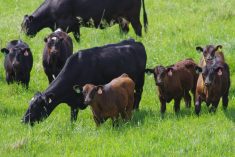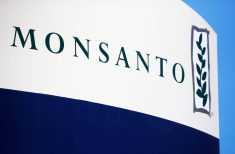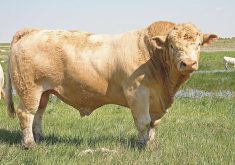While agricultural industry organizations have been sending out press releases extolling the benefits of the Canada/EU free trade agreement, the agreement is far from a done deal. It’s only a memorandum of understanding. A formal agreement needs to be ratified within two years. That’s plenty of time for inserting more details into a final version. History tells us that this trade deal in the end may well just reassert the status quo, and not significantly expand trade with the EU in agricultural products.
Reality check
Read Also

Grazing ‘sweet spot’ boosts pasture performance
Timing-focused approach to pasture management touted to boost forage growth, livestock gains while also cutting farmer labour and inputs
The reality is that Canada needs this trade deal more than the EU.
This may come as a surprise to many, but the EU is already well supplied with virtually every agricultural and food product. There is no market in the EU that is waiting to be filled by Canadian products. All a trade agreement will mean is that Canada will be competing more with other suppliers, both domestic and foreign, in the EU market.
The first hurdle is that the agreement has to be ratified by all 28 EU members. They may still want concessions on any more Canadian imports before they sign on.
More beef access will be the real test. France and Ireland have spent the last 50 years successfully thwarting increased beef imports from North America and will surely challenge this deal. Argentina, Australia, New Zealand and the U.S. all supply beef to the EU. It would be doubtful that Canada would get preferential beef access over those traditional suppliers. An increase of 60,000 tonnes of beef access seems significant, but won’t be much when the EU gives their other foreign suppliers a proportionally equal increase in beef quota.
Pork access
New Canadian pork access of 90,000 tonnes seems significant, but the EU market is essentially self-sufficient in pork. Tariff-free Canadian pork could compete with EU pork as hog producers over there face high production costs with imported feedstuffs, onerous environmental regulations and expensive humane handling practices. You can expect EU pork producers to demand regulations that will equalize environmental standards and handling practices for imports. The EU will want to pass judgment on feed additives (i.e. ractopamine) that are used to produce Canadian pork. EU pork production is also shifting eastward to lower-cost EU countries. Those countries will want to see some pork import restrictions before they ratify any new trade agreement.
Regulatory restrictions
Cereals, oilseeds and pulses may see some increased exports mainly with flours, oils, fibres and proteins. But trade issues, such as GM, remain. They may ban food products that contain any residue of pesticides or herbicides that are banned in the EU. As with meat exports, the EU will have to grant any increase in Canadian access on an equal basis to their other foreign suppliers. Most EU members grow some cereals, oilseeds or pulses; there would be pressure from many to restrict any further unfettered access by foreign suppliers before any of them sign on.
Additional production costs
Canada has agreed to longer drug patent protection to the EU pharmaceutical industry. That would see many brand-name drugs remaining expensive longer. That extension could include animal health drug products. That would impact the livestock and poultry sector. Will increased meat exports to the EU offset increased costs from more expensive EU-sourced animal health products? The EU hormone-added beef ban already reduces Canadian beef competitiveness in the EU market by 15 per cent.
Other suppliers will want deals
Trade opportunities for increased ag exports to the EU will exist if regulations are truly fair. However, increases may be modest and hard fought for, as the EU market is already well served by domestic suppliers and big foreign marketers like the U.S., Australia, New Zealand, and Brazil. None of those countries are going to concede market share to Canada through a free trade agreement. They will be demanding their own agreements with the EU. When that occurs the ag export trade business to the EU may well be back to Square 1 for everyone.
The biggest challenge to the Canada/EU agreement is the impending free trade discussions between the EU and the U.S. This agreement could well undo any of the benefits of the Canada/EU agreement, since the EU would see more value in increased trade with the U.S. than with Canada. The problem is that Canada, unlike the U.S., has no big stick in these discussions which would see our officials agreeing to concessions to get an agreement soon.
Also, will this agreement deal with EU farm subsidies?
Lastly, lest we forget that free trade agreements are not always what they seem. The North American Free Trade Agreement has not stopped the U.S. from unilaterally imposing (direct or indirectly) restrictions, barriers and tariffs on Canadian beef, pork, wheat, potatoes, apples and a host of other products. Almost all those actions were due to political pressures from various groups and sectors in the U.S. economy after the deal was signed. It sets a bad precedent for any final Canada/EU agreement.














